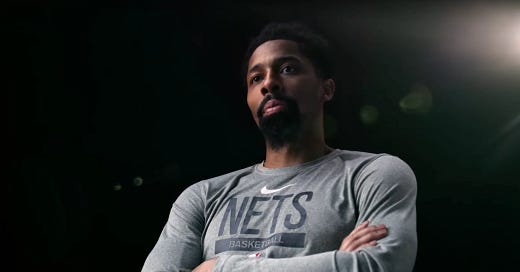On Writing, G League Glory and The Resistance
Sports and glory, lens flares, and strange writing habits
Writers are an insecure bunch. It makes sense. Putting your words into the world is a vulnerable act. Plus few things are more intimidating than the blank page. Our family recently rewatched Harry Potter and The Prisoner of Azkaban, and during that scene where Harry’s soul is sucked away by a ghoulish dementor, I thought that’s how I feel staring at the blank page. Writers are maybe also melodramatic.
There are times, however, when the blank page shouts joyful possibility. This is rarer.
Then there’s the whole thrill of having written. It’s like when the dementors yield to the patronus light, a bright felt surge of victory. Few things are more delightful than filling the page, even if the words feel rough and untamed.
I guess I’m saying I’m learning to enjoy the process of writing again: the difficulty and the delight, the process and the product, all that. Stumbling along the way, playing chicken with the blank page, stringing words into sentences, clustering sentences into paragraphs, all of our meaning making is a gift.
Destination NBA and Yearning for Transfiguration
In one sense, the Prime Video documentary Destination NBA: A G League Odyssey is standard sports fare, as it follows five basketball players trying to break into the NBA. What’s unexpected is the documentary’s suggestion, conveyed mostly in visual terms, that chasing a spot in the NBA is a hunger for glory—something Christians can appreciate as evocative of the desire to behold the glory of God.
The documentary reaches beyond conventional sports tropes through its use of lighting and framing, beginning with the camera positions used for the five G Leaguers’ interviews. Mid-screen, black backdrop, a full body shot while seated on a stool. This is how Gabe York, a former high-school phenom trying to break into the NBA with the Indiana Pacers, is filmed. Small, stark, seemingly insignificant.
In contrast, consider the establishing shots used for an interview with Spencer Dinwiddie (above), who toiled for years in the G League before becoming a legit and well-paid NBA contributor. Dinwiddie appears on camera as larger than life, his body taking up most of the right side of the screen, while a natural orb of light shines above him. In cinephile terms, this light is called a lens flare. Lens flares can occur intentionally or otherwise and are often employed for a sense of gravitas or realism. For religiously minded viewers, the lens flare—a glow of light above the head of those pros who have made the ascent to the NBA—evokes a heavenly glory.
Read the rest here.
Strange Writing Habits
Everyone has them. Apparently, Former President Barack Obama swears by real paper and longhand. Yep, that means he wrote out by hand the first draft of his 760-page tome, A Promised Land.
It’s true. I write with a mid-tier font like Calibiri or a decent one like Cambria, then I call in Garamond to make me feel wise. There are levels to the writing thing, y’all.
Paul Pastor (check out his stellar poetry collection, Bower Loge) chimed in: “You’re not alone in this, my friend.” Comforting, truly.
There’s something to these quirky habits and tricks. Athletes have them and preachers to do. When it comes to writing, I think these quirks are a weapon against what Steven Pressfield calls “the Resistance.” The Resistance, which Pressfield insists we respect with a capital R, is “an energy field radiating from a work-in-potential…a repelling force….Its aim is to shove us away, distract us, prevent us from doing our work.” The blank page is one of the Resistance’s home addresses. Any quirky habits that help us outwit the Resistance are aids in the good fight of making good things.
If you have some usefully idiosyncratic writing or creative habits, I want to hear them. We’re in this thing together.
Until next time,
Claude





